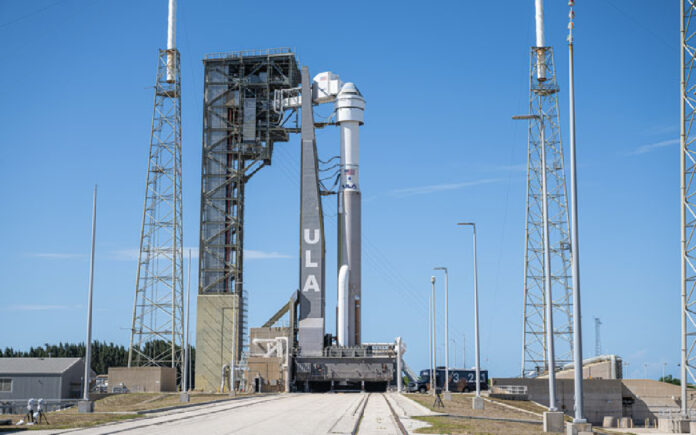Cape Canaveral: Boeing’s highly anticipated launch of the Starliner spacecraft, scheduled for its inaugural crewed voyage on Saturday, has been halted.
The spacecraft was primed to embark atop an Atlas V rocket at 12:25 p.m. ET from Cape Canaveral Space Force Station in Florida, carrying seasoned NASA astronauts Butch Wilmore and Suni Williams.
However, an automatic hold initiated by the ground launch sequencer interrupted the countdown at 3 minutes and 50 seconds before liftoff. The astronauts were safely removed from the capsule and returned to crew quarters to await the next launch opportunity.
Tory Bruno, president and CEO of United Launch Alliance, the company behind the Atlas V rocket carrying Starliner, emphasized the need for hands-on assessment to diagnose the issue causing the launch delay.
“After the rocket has been drained of fuel, teams will be able to assess the triple-redundant computer system at the launchpad,” Bruno stated.
He explained the complexity of the system: “Imagine a large rack that is a big computer where the functions of the computer as a controller are broken up separately into individual cards or printed wire circuit boards with their logic devices. So they’re all stand-alone, but together it’s an integrated controller.”
Bruno clarified that all three computers must concur for the launch to proceed.
“The third one was slow to come up and that tripped a red line — that created an automatic hold because, although the health system did not note that it came up anomalously, it took longer, and so something is not correct,” Bruno elaborated.
The mission teams estimated a 24-hour turnaround time for resolving the issue. If successful, Starliner could launch on Sunday at 12:03 p.m. ET; otherwise, the next launch windows are June 5 and June 6.
“We’ll know more, much, much later this evening,” Bruno reassured.
Before the scrub, mission teams encountered other issues.
Also Read | Race Against Time: WHO Targets 2025 for Global Pandemic Treaty Agreement
Around 10 a.m. ET, a loss of data from ground valves responsible for replenishing the liquid oxygen and hydrogen to the second stage of the Atlas V rocket was reported. However, this issue was swiftly addressed, and the countdown resumed.
The mission, named Crew Flight Test, is the culmination of Boeing’s efforts to develop a spacecraft rivaling SpaceX’s Crew Dragon capsule and expanding US options for ferrying astronauts to the space station under NASA’s Commercial Crew Program.
When Starliner does eventually launch, it will mark only the sixth inaugural journey of a crewed spacecraft in US history, according to NASA Administrator Bill Nelson.
“After Mercury, then Gemini, then Apollo, the space shuttle, then (SpaceX’s) Dragon — and now Starliner,” Nelson remarked.
Williams will make history as the first woman to fly aboard such a mission.
Upon reaching orbit, the Starliner crew capsule will separate from the Atlas V rocket and begin its journey to the International Space Station, where the astronauts will spend eight days conducting various tests and experiments.
Also Read | Russian Missile Strike Injures 13 Near Ukraine’s Kharkiv, Prosecutors Confirm
The earliest possible return for the astronauts is June 10, with additional dates available in case of adverse weather conditions.
Boeing’s Starliner has faced years of development setbacks and test flight problems. However, this mission could be the final major milestone before NASA certifies the spacecraft for routine operations to the space station.
“We look forward to flying this mission. This is a test flight; we know we’re going to learn things,” said Mark Nappi, vice president and program manager of the Commercial Crew Program at Boeing.
Despite the challenges, the teams remain confident in Starliner’s readiness for space travel.



